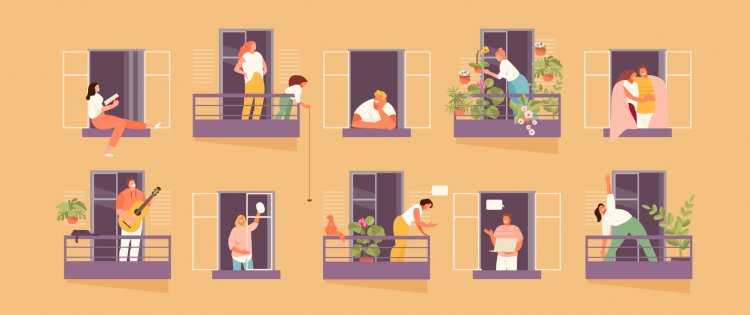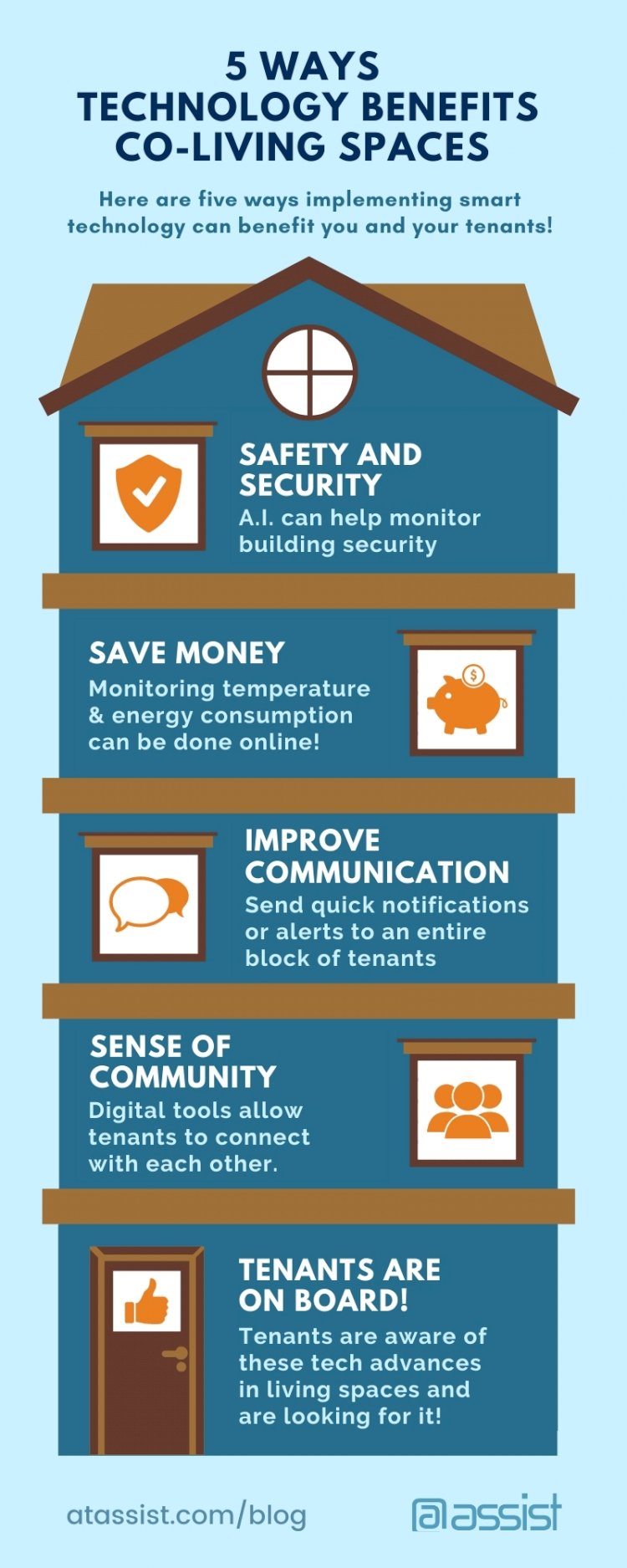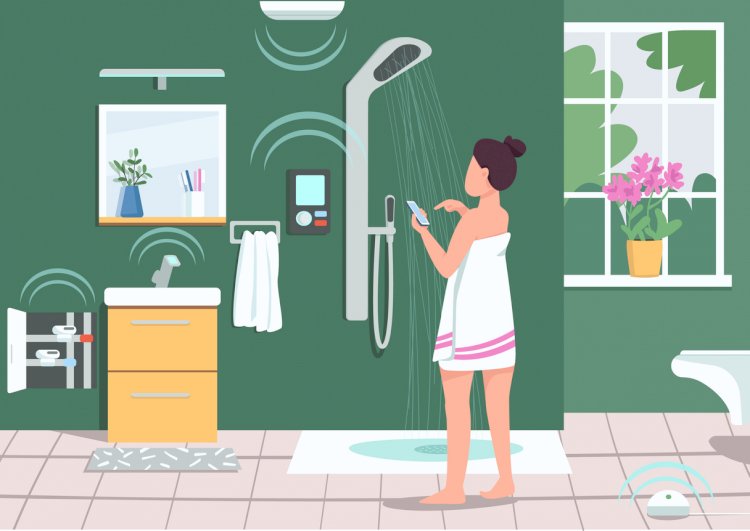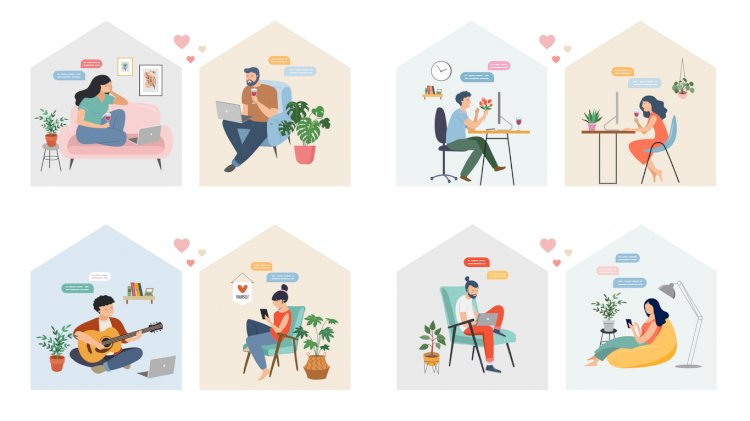5 Ways Technology Benefits Co-Living Spaces
The ease and affordability of co-living has increased in popularity in recent years. While this is not a new concept, it is often the only option for lodging in many downtown city centres. However, some worries can come with sharing a living space and building. Here are 5 ways that technology can improve home living spaces!

The ease and affordability of co-living have increased its popularity in recent years. While this is not a new concept, it is often the only affordable option for lodging in many downtown city centres. In 2019, CBRE Research found that there were roughly 150 modern co-living spaces in the U.S. This is significant growth compared to the handful that were available a few years prior. As co-living becomes more popular across the globe, it is expected that co-living developments will become a $100 billion industry in the coming years.
However, some worries can come with sharing a living space and building. New technology advances are being implemented in buildings to increase safety, security, save money, and more. Here are 5 ways that technology can improve home living spaces!
Safety and Security

One of the main worries that tenants have when it comes to co-living is safety. Depending on the size of the building, tens or hundreds of people could be living in one space. While there are almost always surveillance cameras and security systems in place, many people still worry about their homes getting broken into or even just unfamiliar people wandering around the building.
Artificial intelligence can monitor surveillance cameras to detect unusual behaviour and monitor residents. If a new person enters the building, AI will notify the property owner, who can then log in to the servers and see what is happening in real-time. This goes for unusual activity as well. If the property manager logs in and sees something suspicious, they can alert authorities immediately.
Another way that AI restricts who enters the building is through facial recognition technology. By utilizing facial recognition, AI can scan the faces of people walking into the building and only unlock the doors if they are recognized as tenants. If not recognized by AI, a security guard or staff member must let guests into the building manually. This ensures that no one with potentially malicious intent has access to the residence.
At the beginning of the pandemic, many people in shared living spaces worried about their health and safety. Co-living with numerous people who live separate lives and interact with different people every day poses a risk.
By introducing technology to a co-living space, property managers can ensure touchless entry and new ventilation systems. Thermal cameras can also be used to screen people as they enter the building. Property managers can be alerted if someone has a high temperature, and then they can contact the person in question. AI can continue to monitor the person with a fever to see if they display any other symptoms.
If a tenant is ill, the property manager can send a quick notification or alert to all of the other residents in the building who can then take proper measures to protect themselves. The notification lets everyone know which part of the building the affected person lives in — without revealing confidential information — so that other residents can assess their own level of risk.
Save Money

Smart home systems in place for each unit bring in another level of safety and accessibility for residents. Smart heating and cooling systems can monitor temperatures and adjust controls to keep units warm or cool. People can also control the temperature directly from their phones or simply by using a voice command, and the same goes for smart lighting.
Tenants are alerted if they have left a light on in their home or even their oven and can turn them off from wherever they may be. Smart home technology helps property managers save money on heat and electricity and can even prevent fires.
Improve Communication
Another huge benefit to integrating tech into co-living spaces is the ease of communication. As touched on above, property managers can send quick notifications or alerts to an entire block of tenants, eliminating the need for a detailed mailing list or texting tenants individually. If the property manager is using property management software, notifications like these are a breeze! They can also communicate with their tenants individually through the software to eliminate all sorts of temporary tenant contacts and phone numbers taking up space in their phones.

Property management software also allows all tenant information and documents to be stored in one place for the tenant and landlord to access easily. Holding a meeting to review and sign the lease is no longer necessary. The property manager can simply share the document with their tenant, who is able to review it and sign at a time that is most convenient for them! Keeping everything in the cloud is especially helpful when people are moving from city to city and will not arrive until the day that they move in. Having all important documents in one place online also helps property managers and tenants stay safe by reducing the need for face-to-face contact and in-person meetings.
Another way that technology can improve co-living spaces is through feedback. Digital tools provide property managers with a place for tenants to submit compliments, complaints, or just general feedback. They can even create a small survey that is sent out to tenants every month to assess their level of satisfaction and share ideas on what could be improved.
Foster a Sense of Community

Tech can also help foster a sense of community between the residents of a co-living space. Social media platforms such as Facebook have features to create groups, plan events, and post about general topics concerning the building, neighbourhood or city.
Digital tools allow tenants to organize activities such as bingo night, cooking classes and more! Tenants can also use these tools to organize digital hangouts when in-person events are not recommended. Some co-living residents may not have many commitments outside of work, and others may have recently moved from out of town. Hence, organizing socializing events and meet-and-greets are a great way to foster a sense of community and bring people together.
Tenants Are on Board!
Tenants want to live in a technologically advanced living space. They are even willing to pay more for it! Studies show that one-fifth of renters in the UK are willing to pay up to 10% more for homes with smart features, and half of the people over 35 are willing to pay up to 5% more. While this includes smart home and building tech, wireless and TV packages are also a sought-after addition.
85% look for places with access to a fast wireless connection and a TV package, 75% are seeking smart heating and energy technology to be included, while 74% want a smart security system. Tenants are aware of these technological advances in co-living spaces and are looking for it!
Co-living spaces present an attractive option for many people looking for affordability and accessibility, especially younger demographics. Many renters are looking for homes specifically with smart technology to make their residences more accessible, safer, and to connect easier with their landlords and other tenants around them. With so much of our world online and connected, it only makes sense to bring our homes online as well!
Cloud-Based Property Management Software
Are you a property manager or landlord who wants an easy way to keep track of everything you need daily, such as tenant information, rent payments, and maintenance requests? With Sugu, you receive all that and more, all in a cloud-based platform you can access anywhere with the internet. Learn more!

 contact@atassist.com
contact@atassist.com 





